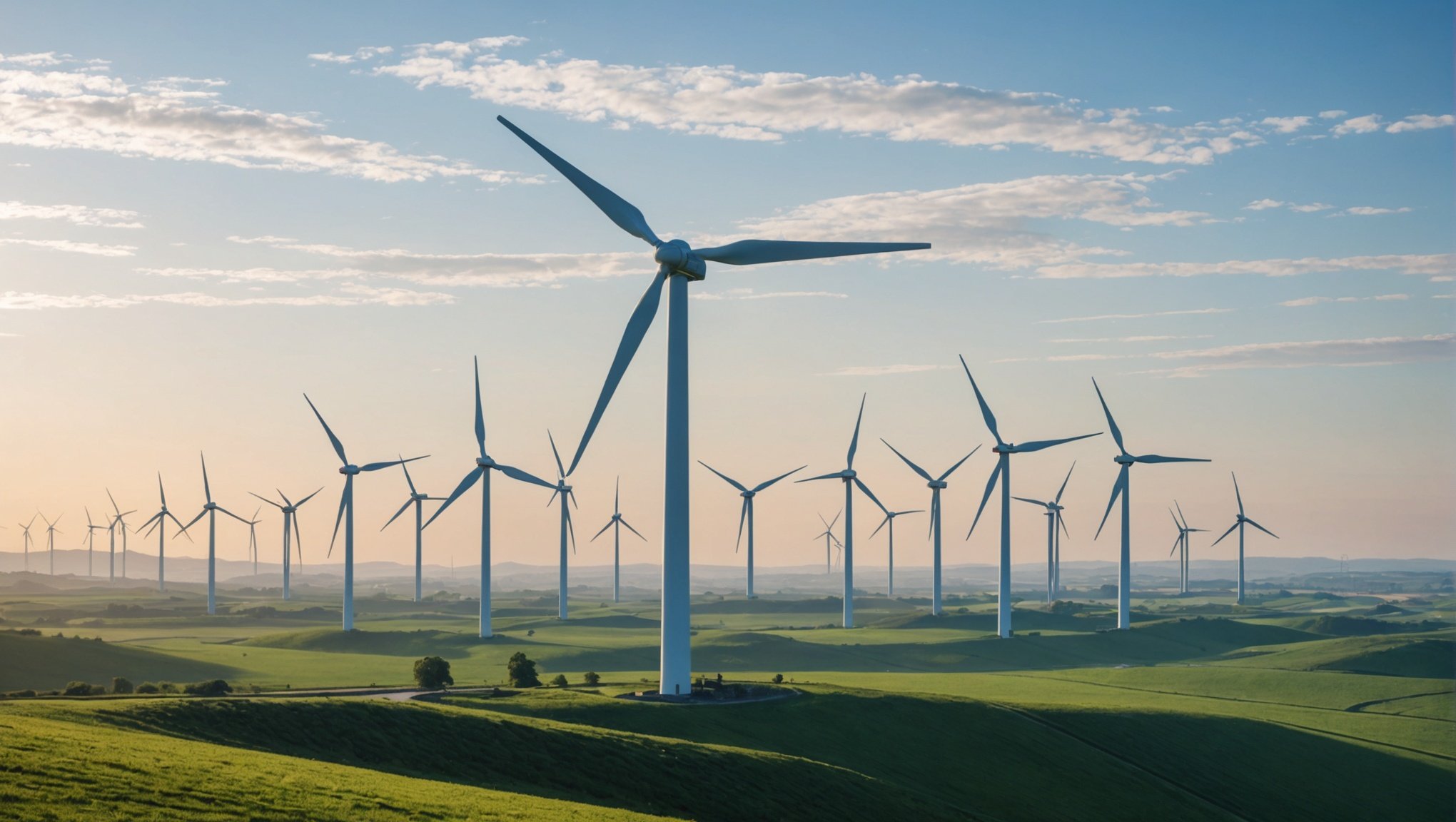Overview of AI Applications in Wind Power
Harnessing AI in Wind Energy has proven transformative in enhancing Wind Power Efficiency. With the integration of Renewable Energy Technology, AI technologies significantly optimize wind farm operations, ensuring that energy production meets its full potential. At the core of this enhancement is data analytics, which allows operators to interpret vast datasets with speed and precision.
Through machine learning, predictive maintenance becomes feasible, reducing downtime and operational costs. By anticipating potential malfunctions, AI predicts and schedules necessary maintenance, thus averting unforeseen failures. This approach not only maintains the efficiency of machinery but also extends the lifespan of infrastructure.
Topic to read : Unlocking Potential: Innovative Ways UK Universities Can Harness Blockchain for Safe Credentialing
Specific applications of AI have yielded measurable improvements. For instance, advanced algorithms provide precise wind pattern predictions, maximizing turbine energy capture. By constantly learning and adjusting, machine learning models optimise the blade angles and rotational speeds under varying conditions, a task traditionally limited to static settings.
Moreover, AI’s capability to analyze real-time data from multiple sources aids in actively managing grid distribution, ensuring energy generated aligns with demand patterns. These developments underscore the vital role of AI in shaping a more efficient and reliable future for wind energy.
Have you seen this : Unlocking Property Management: The Power of Digital Twins for UK Real Estate Companies
Case Studies of UK Renewable Energy Firms
The rapid evolution of UK Wind Energy Firms is significantly influenced by AI Innovations. Through various case studies, we explore how AI applications have reshaped the landscape.
Case Study 1: Firm A’s Implementation of AI
Firm A has strategically incorporated AI to optimise operations and predictive maintenance in wind farms. This firm uses machine learning algorithms to anticipate equipment failures, thus significantly reducing downtime and maintenance costs. The AI models also analyse weather data to forecast wind patterns, enhancing energy output predictions. According to metrics documented, energy output accuracy improved by 15%, and unexpected outages decreased by 25%. These metrics not only demonstrate performance boosts but also set standards for efficiency across the sector.
Case Study 2: Firm B’s Success in Efficiency Enhancement
In the quest for efficiency, Firm B employed AI to streamline energy production processes. By utilising data analytics, the firm achieved a 20% reduction in operational wastage. AI-driven systems provided real-time insights into performance metrics and energy flow, enabling proactive management strategies. The primary lesson learned emphasizes integrating AI with existing systems to ensure seamless transitions and enhanced data accuracy.
Case Study 3: Firm C’s Innovative AI Solutions
Firm C stands out for its innovative AI applications in energy storage and distribution. Leveraging predictive analytics, the firm optimised battery usage, resulting in a 30% increase in energy storage efficiency. AI also enabled more effective distribution, ensuring that power supply met demand precisely. Valuable insights showcase how cutting-edge AI solutions can pivot traditional energy methods to innovative practices, setting examples in the renewable energy sphere.
Technological Innovations Driving Efficiency
The pursuit of efficiency in wind energy technologies has led to remarkable advancements, particularly through integration with AI solutions. These renewable energy innovations are not only enhancing current systems but are also setting the stage for future advancements. AI is proving instrumental in optimising wind power through predictive maintenance, a technology that allows wind farm operators to anticipate equipment failures before they occur. This proactive approach minimises downtime and extends the lifespan of machinery, dramatically reducing costs.
In addition, condition monitoring systems provide real-time data on the health of wind turbines, offering insights into performance and potential fixes. By utilising AI-powered analytics, operators can make informed decisions swiftly, maximising energy generation and improving operational efficiency. Predictive algorithms enable accurate forecasting of wind patterns, allowing for better resource allocation and grid integration.
Looking ahead, future innovations such as smart grid technologies and enhanced aerodynamics are on the horizon. These will further refine the efficiency of wind power generation. The integration of AI solutions in wind energy underscores a significant shift towards smarter, more efficient, and sustainable energy systems. By continuing to leverage these technologies, the potential for renewable energy sources to play a key role in global energy production is vast.
Expert Insights and Opinions
In the realm of renewable energy, expert analysis often highlights the transformative impact of AI on energy efficiency. Interviews with various renewable energy experts underscore the significant potential AI holds for the sustainability of wind energy. These experts emphasize that AI can optimize wind turbine operations by predicting equipment failures before they occur and by improving energy output through smarter resource allocation.
The long-term implications of AI in enhancing the sustainability of wind energy are profound. Industry specialists predict that as AI technology advances, its integration into wind energy systems will become even more seamless. The ability to run simulations and analyses can lead to better-informed decisions, mitigating risks and minimizing downtime.
However, the journey to full AI adoption in renewable energy isn’t without its challenges. Experts often point to potential barriers, including high initial costs for AI technology implementation and a lack of skilled personnel capable of managing these advanced systems. Additionally, there are concerns about data privacy and security, necessitating stringent measures to protect sensitive energy data.
Despite these challenges, the consensus among renewable energy experts is overwhelmingly positive. The integration of AI in the wind energy sector promises not only to enhance efficiency but also to pave the way for a more sustainable and reliable energy future.
Future Developments in AI and Wind Power
As technology evolves, AI advancements and wind power research are becoming increasingly intertwined. Predictions for the future interaction between AI and wind power suggest a remarkable boost in efficiency. AI has the potential to optimise wind turbine operations, from predictive maintenance to energy forecasting. These improvements could significantly increase wind energy output and reduce downtime, providing a reliable source of renewable energy.
Continued investment in AI-driven technologies is crucial. The importance of ongoing research cannot be overstated, as it drives innovation in both fields. With AI’s ability to analyse vast datasets, it can fine-tune turbine performance and adapt to changing environmental conditions. Consequently, this enhances the overall capacity of wind power systems, ensuring they meet energy demands effectively.
Moreover, AI’s role extends beyond technical improvements. It is poised to influence policy and regulations within the renewable sector. By providing data-driven insights, AI can support policymakers in creating informed strategies to harness the full potential of wind energy. This integration could lead to more stable and predictably structured policies that benefit not just the tech industry but also environmental sustainability.
The convergence of AI and wind power holds promise for a sustainable energy future, with AI leading the charge towards efficiency and reliability.











